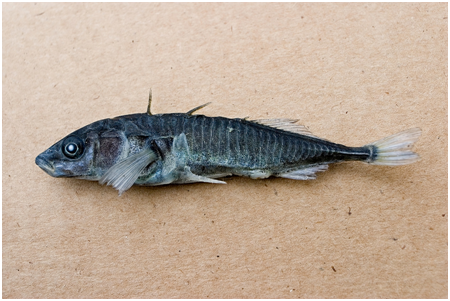12: Regulation of Gene Expression
- Page ID
- 27311
\( \newcommand{\vecs}[1]{\overset { \scriptstyle \rightharpoonup} {\mathbf{#1}} } \)
\( \newcommand{\vecd}[1]{\overset{-\!-\!\rightharpoonup}{\vphantom{a}\smash {#1}}} \)
\( \newcommand{\id}{\mathrm{id}}\) \( \newcommand{\Span}{\mathrm{span}}\)
( \newcommand{\kernel}{\mathrm{null}\,}\) \( \newcommand{\range}{\mathrm{range}\,}\)
\( \newcommand{\RealPart}{\mathrm{Re}}\) \( \newcommand{\ImaginaryPart}{\mathrm{Im}}\)
\( \newcommand{\Argument}{\mathrm{Arg}}\) \( \newcommand{\norm}[1]{\| #1 \|}\)
\( \newcommand{\inner}[2]{\langle #1, #2 \rangle}\)
\( \newcommand{\Span}{\mathrm{span}}\)
\( \newcommand{\id}{\mathrm{id}}\)
\( \newcommand{\Span}{\mathrm{span}}\)
\( \newcommand{\kernel}{\mathrm{null}\,}\)
\( \newcommand{\range}{\mathrm{range}\,}\)
\( \newcommand{\RealPart}{\mathrm{Re}}\)
\( \newcommand{\ImaginaryPart}{\mathrm{Im}}\)
\( \newcommand{\Argument}{\mathrm{Arg}}\)
\( \newcommand{\norm}[1]{\| #1 \|}\)
\( \newcommand{\inner}[2]{\langle #1, #2 \rangle}\)
\( \newcommand{\Span}{\mathrm{span}}\) \( \newcommand{\AA}{\unicode[.8,0]{x212B}}\)
\( \newcommand{\vectorA}[1]{\vec{#1}} % arrow\)
\( \newcommand{\vectorAt}[1]{\vec{\text{#1}}} % arrow\)
\( \newcommand{\vectorB}[1]{\overset { \scriptstyle \rightharpoonup} {\mathbf{#1}} } \)
\( \newcommand{\vectorC}[1]{\textbf{#1}} \)
\( \newcommand{\vectorD}[1]{\overrightarrow{#1}} \)
\( \newcommand{\vectorDt}[1]{\overrightarrow{\text{#1}}} \)
\( \newcommand{\vectE}[1]{\overset{-\!-\!\rightharpoonup}{\vphantom{a}\smash{\mathbf {#1}}}} \)
\( \newcommand{\vecs}[1]{\overset { \scriptstyle \rightharpoonup} {\mathbf{#1}} } \)
\( \newcommand{\vecd}[1]{\overset{-\!-\!\rightharpoonup}{\vphantom{a}\smash {#1}}} \)
Within most multicellular organisms, every cell contains essentially the same genomic sequence. How then do cells develop and function differently from each other? The answer lies in the regulation of gene expression. Only a subset of all the genes is expressed (i.e. are functionally active) in any given cell participating in a particular biological process. Gene expression is regulated at many different steps along the process that converts DNA information into active proteins. In the first stage, transcript abundance can be controlled by regulating the rate of transcription initiation and processing, as well as the degradation of transcripts. In many cases, higher abundance of a gene’s transcripts is correlated with its increased expression. In this chapter, we will focus on transcriptional regulation. Be aware, however, that cells also regulate the overall activity of genes in other ways. For example, by controlling the rate of mRNA translation, processing, and degradation, as well as the post-translational modification of proteins and protein complexes.

Figure 12.1: The stickleback is an example of an organism in which mutations cause changes in the regulation of gene expression. These mutations confer a selective advantage in some environments. Natural selection acts on mutations altering gene expression as well as those changing the coding regions of genes. (Flickr-frequency-CC:AND)
- 12.0: The lac Operon
- Early insights into mechanisms of transcriptional regulation came from studies of E. coli by researchers Francois Jacob & Jacques Monod. In E. coli, and many other bacteria, genes encoding several different proteins may be located on a single transcription unit called an operon. The genes in an operon share the same transcriptional regulation, but are translated individually. Eukaryotes generally do not group genes together as operons (exception is C. elegans and a few other species).
- 12.1: The Use of Mutants to Study the lac Operon
- The lac operon and its regulators were first characterized by studying mutants of E. coli that exhibited various abnormalities in lactose metabolism.
- 12.5: Epigenetics
- The word “epigenetics” has become popular in the last decade and its meaning has become confused. The term epigenetics describes any heritable change in phenotype that is not associated with a change the chromosomal DNA sequence.
- 12.7: Gene Expression Essentials
- Express yourself through your genes! See if you can generate and collect three types of protein, then move on to explore the factors that affect protein synthesis in a cell.
Contributors
Dr. Todd Nickle and Isabelle Barrette-Ng (Mount Royal University) The content on this page is licensed under CC SA 3.0 licensing guidelines.


